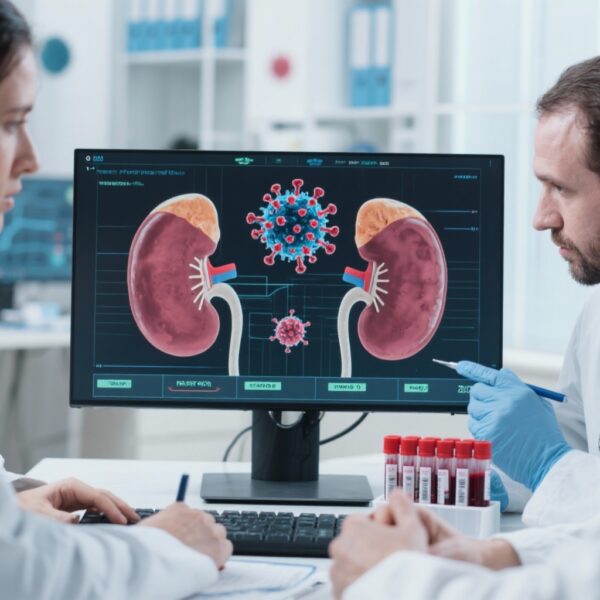Introduction and Disease Burden
Obesity, particularly class II and III, presents a significant and growing global health challenge. It is associated with numerous comorbidities such as type 2 diabetes, cardiovascular disease, and certain cancers, contributing to increased morbidity, mortality, and healthcare costs. Despite the availability of various treatment modalities, effective management remains complex.
Historically, metabolic bariatric surgery (MBS) has been regarded as the most efficacious intervention for significant and sustained weight loss in severe obesity. However, this approach is often reserved for cases where conservative therapies fail, owing to concerns about costs, invasiveness, and accessibility. Recently, glucagon-like peptide-1 receptor agonists (GLP-1 RAs), initially developed for diabetes management, have demonstrated promising weight reduction effects, prompting re-evaluation of their role relative to surgical options.
This article examines a recent cohort study comparing the long-term outcomes and respective costs of MBS versus GLP-1 RAs, providing insights into optimal treatment strategies and health policy considerations.
Study Design and Population
The analyzed study utilized a retrospective cohort design, integrating data from the Highmark Health insurance claims database and the Allegheny Health Network electronic medical records from the US. It included adults with class II or III obesity who initiated either MBS or GLP-1 RAs, ensuring they had continuous insurance coverage for at least six months prior and follow-up data for at least 12 months.
Participants were broadly categorized into two groups based on the intervention: those undergoing bariatric procedures (sleeve gastrectomy or gastric bypass) and those receiving pharmacotherapy (dulaglutide, exenatide, liraglutide, lixisenatide, semaglutide, or tirzepatide). Using propensity score weighting to account for confounders, the study aimed to draw balanced comparisons.
Endpoints included total weight loss percentage and ongoing healthcare costs, assessed over a two-year follow-up period. Cost components encompassed pharmacy, medical, and surgical expenses.
Key Findings and Outcomes
The study encompassed a sizable population of 30,458 patients, with a mean age of 50 years and approximately two-thirds female representation. Notably, 14,101 patients underwent MBS, while 16,357 received GLP-1 RAs, with comparable baseline characteristics post-adjustment.
In terms of weight loss, the MBS group achieved significantly greater reduction, averaging approximately 28.3% of body weight loss compared to 10.3% in the pharmacotherapy group (P < .001). This substantial difference underscores the superior efficacy of surgical intervention in substantial weight reduction.
Cost analysis revealed that over two years, the mean total healthcare expenditure was higher in the GLP-1 RA group ($63,483) than in the MBS group ($51,794) (P < .001). The main driver was sustained pharmacy costs, which remained elevated in the medication group due to ongoing drug expenses, while surgical costs were offset by reduced subsequent medical utilization.
These findings suggest that although GLP-1 RAs are effective, especially for patients unfit for surgery, they tend to incur higher ongoing costs and achieve lower weight loss compared to MBS.
Expert Commentary
The evidence from this study reinforces the position of MBS as a highly effective intervention for severe obesity, capable of producing substantial weight loss at a lower long-term cost. The persistent pharmacy expenses associated with GLP-1 RAs highlight the economic burden of pharmacotherapy, although such treatments may be preferable for certain patient populations, such as those with contraindications to surgery.
However, limitations include the observational design, which may be subject to residual confounding despite propensity score adjustment. Further, real-world adherence to medication regimens and patient preferences were not explicitly examined.
Recent guidelines recognize the role of GLP-1 RAs as adjuncts or alternatives to surgery, especially with emerging data supporting their efficacy. Cost considerations and patient-centric factors must guide individualized treatment plans.
Conclusion and Future Directions
This comparative analysis confirms that MBS yields greater weight loss at a lower overall cost over two years compared to GLP-1 RAs in patients with severe obesity. Nevertheless, the optimal treatment pathway should consider patient comorbidities, preferences, and risk profiles.
Future research should focus on long-term comparative effectiveness, quality of life outcomes, and stratified analyses to identify which subgroups benefit most from each intervention. Health policy makers should weigh the high upfront costs of surgery against its durability and cost savings over time, while facilitating access to both effective treatment modalities.
In summary, MBS remains a cornerstone for severe obesity management, with GLP-1 RAs providing a valuable, though currently costlier, pharmacological option. Ongoing innovations and individualized care approaches are needed to optimize outcomes for patients with obesity.
Reference
Barrett TS, Hafermann JO, Richards S, LeJeune K, Eid GM. Obesity Treatment With Bariatric Surgery vs GLP-1 Receptor Agonists. JAMA Surg. 2025 Sep 17:e253590. doi: 10.1001/jamasurg.2025.3590. Epub ahead of print. PMID: 40960852; PMCID: PMC12444648



